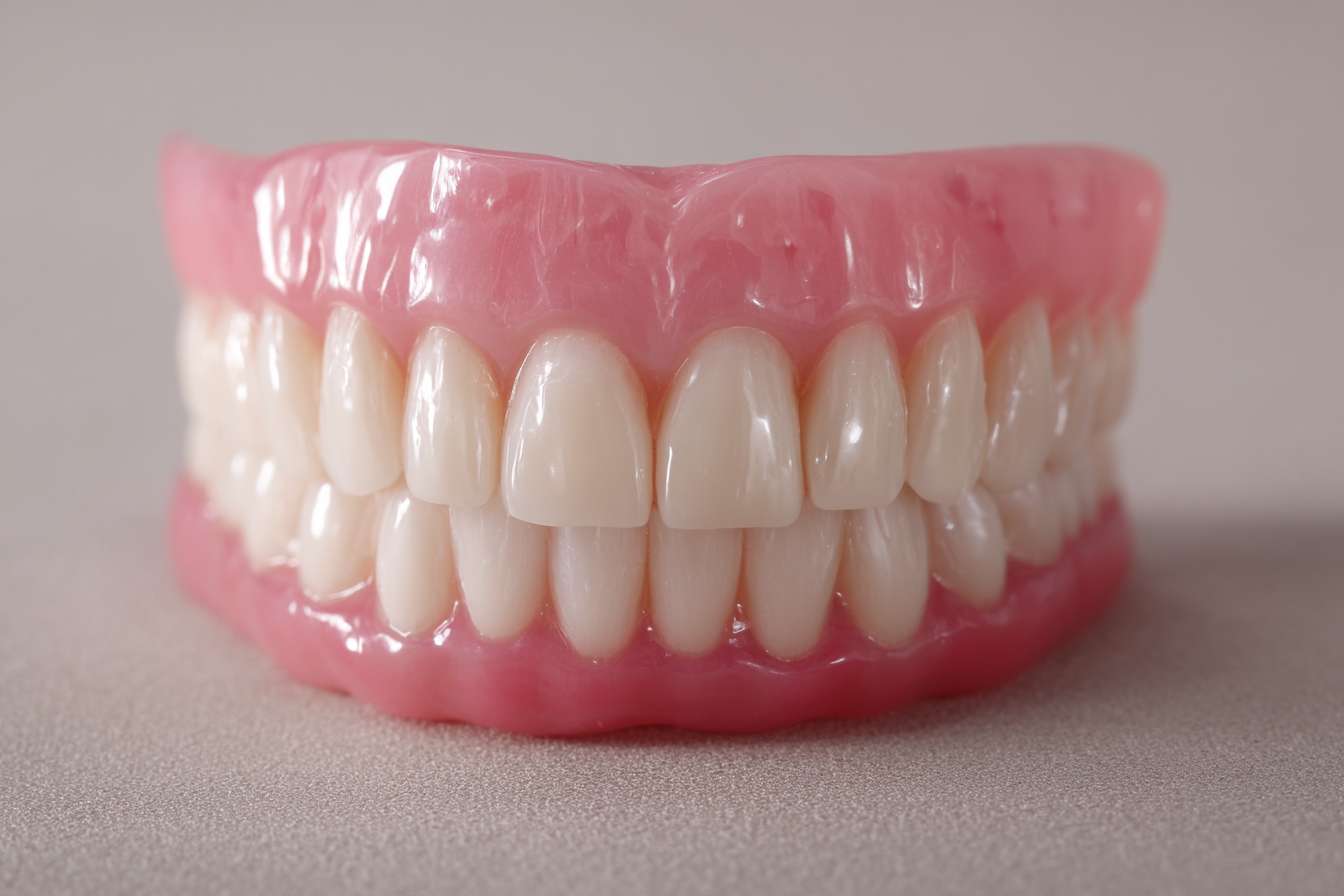Dentures Explained: Restore Your Smile with Confidence
Discover how dentures can revive your smile and everyday function. This in-depth guide covers traditional full and partial dentures, implant-supported options, immediate prostheses, and modern invisible (flexible) dentures. Learn how they are made, fitted, cared for, and which type may suit your needs—plus practical maintenance tips and pros and cons to help you choose with confidence.

Introduction Dentures remain a widely used solution for replacing missing teeth and improving both appearance and oral function. From classic acrylic sets to implant-retained and flexible invisible options, prosthetic teeth have evolved to meet diverse needs. This guide outlines the main types of dentures, how they are produced and fitted, the benefits of flexible invisible dentures, a practical comparison with traditional styles, and care recommendations to prolong their life.
Types of Dentures There are several categories of dentures designed to address different degrees of tooth loss and patient preferences: 1. Full (complete) dentures: Replace all teeth in either the upper or lower jaw. They rely on suction to the gums and sometimes dental adhesives to stay in place. 2. Partial dentures: Intended to fill gaps when some natural teeth remain. They attach to existing teeth using metal clasps or precision attachments to restore function and aesthetics. 3. Implant-supported dentures: These dentures lock onto dental implants anchored in the jawbone, offering superior stability and often improved chewing comfort compared with removable sets. 4. Immediate dentures: Inserted straightaway after extractions so patients are not left toothless during healing. They are usually relined or adjusted as tissues change. 5. Flexible (invisible) dentures: Made from a thin, pliable thermoplastic material that blends with gum tissue and avoids visible metal components.
How Dentures Are Made and Fitted Receiving a set of custom dentures generally follows a stepwise process: 1. Consultation: The dentist evaluates oral health, discusses options and helps determine the best prosthesis for your situation. 2. Impressions: Accurate molds of the gums and any remaining teeth are taken to capture the mouth’s contours. 3. Laboratory fabrication: A dental lab constructs the denture according to the impressions and the dentist’s specifications. 4. Initial fitting: The dentist places the new dentures, checks bite and comfort, and makes adjustments for proper function. 5. Follow-up care: Additional visits allow for relines, refinements, or repairs to ensure long-term comfort and fit.
Benefits of Flexible (Invisible) Dentures Flexible dentures, sometimes called invisible dentures, provide several advantages over traditional rigid types: - Natural appearance: The thin, gum-colored base integrates smoothly with soft tissues, making the prosthesis less conspicuous. - Increased comfort: The soft, resilient material conforms to oral contours and reduces rubbing and sore spots. - Secure fit without metal: Because the material adapts to the mouth, it can hold in place without obvious metal clasps. - Toughness: Flexible thermoplastics are less prone to cracking or chipping compared with some hard acrylics. - Gentle on sensitive patients: They are a good option for those with allergies or sensitivities to acrylic or metal components.
Comparing Traditional and Flexible Dentures When deciding between conventional and flexible dentures, consider these key differences: - Material: Traditional dentures are typically made from acrylic resin or porcelain teeth on an acrylic base; invisible dentures use a flexible thermoplastic. - Visual impact: Rigid acrylic sets may be more noticeable, while flexible options are designed to blend with the gums. - Comfort: Rigid prostheses can cause pressure points at first; flexible ones generally feel softer against tissues. - Durability: Acrylic dentures can chip or fracture under stress; flexible materials resist such damage but may be harder to modify. - Cost: Traditional acrylic dentures are usually less expensive upfront; flexible and implant-retained solutions often cost more. - Adjustability: Acrylic dentures are relatively straightforward to reline or adjust; flexible dentures may require special handling and can be more challenging to alter.
Note about pricing Any cost or pricing references should be treated as general guidance and can change over time. Always research current rates and discuss financial implications with your dental provider before deciding.
Caring for Your Dentures Proper daily care extends the life of your dentures and helps maintain oral health: 1. Clean them daily with a soft brush and a non-abrasive denture cleanser to remove plaque and food debris. 2. Keep dentures moist when not worn by soaking them overnight in an appropriate solution to preserve shape. 3. Handle with caution: clean over a towel or basin of water to prevent damage if they slip from your hands. 4. Rinse after meals to remove trapped particles and reduce odor. 5. Attend regular dental appointments so your dentist can professionally clean and adjust the fit as needed. 6. Avoid exposing dentures to very hot water, which can warp the material. 7. Do not use household bleach or harsh chemicals; use products formulated for denture care.
Conclusion and Disclaimer With proper selection and maintenance, dentures—whether traditional, implant-supported, immediate, or flexible—increase comfort, restore the ability to eat and speak, and improve appearance. Discuss options with a qualified dental professional to determine the best solution for your oral health and lifestyle. This article provides general information and is not a substitute for personalized medical advice. Consult a licensed healthcare provider for recommendations tailored to your needs.






